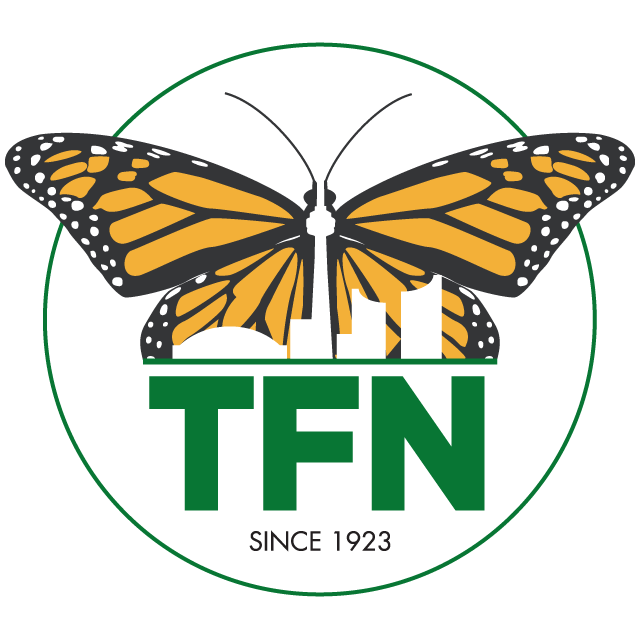by Charles Bruce-Thompson
The butternut tree, Juglans cinerea, is a medium-sized native tree that can reach up to 30 m in height. It belongs to the walnut family and produces edible nuts in the fall.
It is also an endangered species. Its numbers have been decimated by butternut canker, a fungal disease. This fungus has already had a devastating impact on North American butternut populations. Butternut canker is a fungus, probably originating somewhere in Asia, that can spread quickly and infect and kill healthy butternut trees of any size or age in a few years. The effects of butternut canker were first noticed in the late 1960s.
So it was a pleasant surprise when TFN President Jason Ramsay-Brown noticed that the Jim Baillie Nature Reserve (JBNR) species list in The Guide to the Toronto Field Naturalists’ Nature Reserves booklet mentioned butternuts among the trees listed there. Unfortunately, the list didn’t mention where they might be found or when they were last seen. We had never noticed any on our any of our regular trips to the reserve, so Jason and I undertook a thorough search of the reserve in April. We couldn’t find a single example.
Undaunted, Jason proposed reintroducing butternuts to the reserve. These had to be certified as being genetically sound; many healthy butternut trees found in Ontario and elsewhere have subsequently turned out to be hybrids with the Japanese walnut. Japanese walnuts, commonly known as heartnuts, were introduced in the late 1800s and readily hybridize with the native butternut. We found a local supplier, Paul Haydon of Grow Wild! Native Plant Nursery in Omemee, who could supply saplings with the right genetics and ordered a dozen for delivery to the reserve. Thanks are due to TFN member Steve Smith for recommending Paul’s services
We had previously scouted out locations on the reserve that conformed to the trees’ preferred growing conditions, that is, in deciduous forests with moist, well-drained soil in a sunny location and near the forest edge. We found areas close to the shelter that answered all these requirements. An added advantage was that we found a water source close by.
We were very fortunate to have very helpful and cooperative neighbour, Isaac Robinson, whose family property shares a boundary with the west side of the reserve, and allowed us to have the saplings, along with mulch and black earth, delivered onto his property only a few metres from the selected planting area. This saved up a significant of amount of physical drudgery!
On Wednesday, October 9 a party of TFN volunteers (see photograph) met at the reserve to plant the awaiting saplings. We had them all – 13 as it turned out – planted, mulched and watered by lunchtime, on a pleasantly warm and sunny morning.
Aside from reintroducing the endangered butternut to the JBNR there may be another benefit: the area where we planted the trees is infested with dog-strangling vine (DSV). Our hope is that the chemical juglone, produced by the roots of both black walnuts and butternuts, will eventually eradicate DSV in the area where they are planted.
Jason recorded the GPS coordinates of all the plantings so we’ll be able to locate them when we return to check on their progress. We are reasonably optimistic about their long-term prospects; as there are no butternut trees anywhere in the area our plantings may be protected from the butternut canker by physical isolation from affected populations.
I hope that in future years we can return to chart the progress of our butternut grove and eventually gather butternuts to germinate and disseminate!
Many thanks to all our willing volunteers for their time, energy and excellent company.
Addendum: In the reserve I noticed a touching anonymous floral tribute placed by the memorial plaque on the rock pile near the shelter where Jim Baillie’s ashes were placed in 1996.

